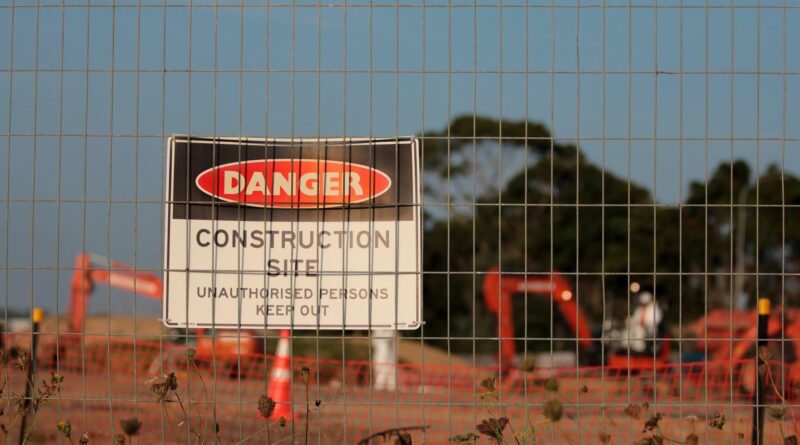7 Effective Ways to Identify Workplace Safety Issues
Photo by Sandy Millar on Unsplash
A crucial component of any organization’s operations is workplace safety. Employers are required by law and morality to provide a secure workplace that reduces the possibility of accidents and injury.
The first step in addressing workplace safety issues and establishing a safer workplace is to identify them. This post will look at seven efficient strategies to spot workplace safety problems.
Utilizing External Resources
Employers can also benefit from utilizing external resources, such as partnering with reputable safety consulting firms like Zokal Safety Australia, to identify workplace safety issues.
Reliable Zokal Safety Australia is a leading provider of workplace safety solutions, offering a wide range of services including safety audits, inspections, training, and consulting.
Leveraging the expertise and experience of external safety professionals can provide valuable insights and recommendations for improving workplace safety.
Carrying out routine safety inspections
Regular safety inspections are among the best strategies to spot workplace safety problems. These inspections entail in-depth analyses of the workplace to spot potential hazards like worn-out machinery, improperly storing hazardous goods, poor lighting, slick flooring, blocked emergency exits, and other safety breaches.
A trained employee or outside safety specialists can conduct safety checks. The results of these inspections should be documented and distributed to the appropriate parties so that corrective action may be taken right away.
Encouraging Employee Reporting
Employees are the first line of defense in identifying workplace safety issues. Employers should encourage employees to report any safety concerns they observe or experience.
This can be done through open communication channels, anonymous reporting systems, or regular safety meetings.
Employers should create a positive culture where employees feel comfortable reporting safety issues without fear of retaliation. Employee feedback can provide valuable insights into potential safety hazards that may have been overlooked and can help in taking proactive measures to address them.
It is crucial to look after your employee’s well-being to increase the productivity and better working environment.
Analyzing Accident and Incident Reports
Workplace accidents and incidents are often an indication of underlying safety issues. Employers should carefully analyze accident and incident reports to identify patterns or trends that may point to systemic safety issues.
For example, if there is a consistent pattern of slips and falls in a particular area of the workplace, it may indicate a need for better signage or improved housekeeping practices.
Analyzing accident and incident reports can help employers identify areas where additional safety measures may be required.
Examining near-miss reports
Near-miss reports are instances in which an injury or accident was just barely avoided. These instances frequently serve as warning signs for prospective safety issues that must be resolved in order to stop further accidents.
To spot any repeating patterns or tendencies, employers should study and examine near-miss records.
For instance, if there are numerous near-miss accidents involving poor usage of equipment, it may be necessary to update training or maintenance procedures.
Near-miss reports give important information about potential safety problems that might have gone overlooked.
Conducting Job Hazard Analysis:
Job hazard analysis is a systematic process of identifying potential hazards associated with specific job tasks. Employers should conduct job hazard analysis for all job roles in their organization to identify potential safety issues.
This involves breaking down each job task into its individual steps and analyzing the hazards associated with each step. The analysis should consider factors such as the type of equipment used, the nature of the task, the work environment. and the skills and experience of the employees performing the task.
Job hazard analysis can help employers identify potential safety issues and implement preventive measures to mitigate the risks.
Staying Current with Regulations and Industry Standards
The laws governing workplace safety and the standards set by the industry are always changing. Employers can assure compliance by staying current on the laws and standards that apply to their sector.
This includes adhering to industry-specific standards, such as those established by the National Fire Protection Association (NFPA) for fire safety, and understanding the legal requirements related to workplace safety, such as the Occupational Safety and Health Administration (OSHA) regulations in the United States.
Employers can detect any gaps and make sure their workplace safety practices are current by routinely evaluating and upgrading safety policies and procedures based on the most recent rules and standards.
In conclusion, workplace safety is of paramount importance for every organization. Employers should take proactive measures to identify workplace safety issues and address them to create a safer work environment for their employees.
Conducting regular safety inspections, encouraging employee reporting, analyzing accident and incident reports, reviewing near miss reports, conducting job hazard analysis, and staying abreast of regulations and industry standards are effective ways to identify workplace safety issues.
By implementing these practices, employers can identify potential hazards, trends, and patterns that may pose risks to employee health and safety. Taking prompt and appropriate corrective actions based on the findings can prevent accidents, injuries, and costly legal liabilities.




